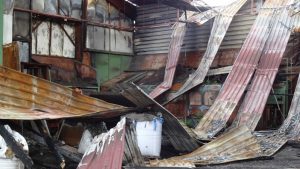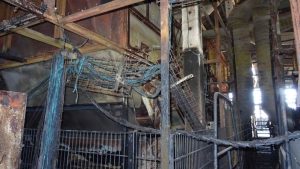Insured value
In the case of damage and in particular major damage in the area of “machinery, mechanical engineering, plants”, the insured value is determined by experts or surveyors.
Sum insured / insured value
The sum insured is the amount agreed in detail between the insurer and the policyholder, which should correspond to the insured value.

Sum insured
The insurer and the company ("policyholder") contractually agree on the sum insured. This amount represents the insured value that "should" correspond to the machinery, equipment, operating facilities. This value is of great importance in a regulation.

Determine insurance value
One of the duties of the appraiser(s) is to determine the insured value. On this depends whether the injured party (policyholder) may have been underinsured.
If the sum insured is lower than the insured value immediately before the occurrence of the insured event, there is underinsurance. In the event of underinsurance, the indemnity shall be reduced in the ratio of the sum insured to the insured value according to the following calculation formula:
Compensation = amount of damage * sum insured / insured value.

Why underinsurance?
Underinsurance occurs when the machinery, equipment and fixtures are incorrectly valued or not valued at all. It can also happen if you simply underreport with the goal of paying lower insurance premiums, or even if you are ill-advised. This then becomes a financial boomerang in the event of a claim at the latest.

Check sum insured => Determine insured value
For settlement by the insurer, it is therefore of decisive importance whether the contractually agreed sum insured was actually applicable in reality at the time of the loss. In practice, contracts are prepared by insurance brokers.
Often the sum insured, which is important for the conclusion of the contract and which of course also influences the premiums to be paid by the policyholder, is estimated or taken from the asset management of the accounting department, i.e. the book values. However, this never meets reality and usually leads to negative surprises in the event of a claim.
Other important aspects for hedging
Sum insured and value insured play an extremely important role in the area of property insurance, especially in the case of major losses in mechanical engineering, plant and operating equipment. These two factors are crucial for claims settlement in such situations.
-
Cost recovery and restoration: The sum insured defines the maximum amount an insurance company will pay out in the event of a loss, provided there is no underinsurance. In the case of large claims, these costs can be significant, and an inadequate amount of insurance could result in the company having to pay the difference out of pocket, which can be financially devastating.
-
Valuation: Accurate valuation prior to the claim is critical as it ensures that the sum insured is appropriate. In the case of major losses, inadequate valuation can result in the affected company being compensated less than it needs to resume operations.
-
Risk assessment and premium calculation: The sum insured, determines the amount of the insurance premium. A higher insured value and sum insured usually result in higher premiums. Companies must therefore carefully consider how high to set these values to ensure sufficient coverage without unnecessarily driving up insurance costs.
-
Risk management: Determining the “right” amount and value of insurance is an important part of a company’s risk management. By ensuring adequate coverage, companies can protect their financial stability and guard against unexpected financial burdens from major losses.
-
Contract compliance: It is crucial that the sum insured corresponds to the actual insured value in the insurance contract Otherwise, this can lead to problems when a claim occurs. An accurate and updated valuation of insured assets is therefore essential to ensure that insurance coverage is in line with the agreements.
Overall, the “correct” sum insured and insurable value in the case of major losses in the area of machinery, plant and operating equipment are of crucial importance in ensuring that companies are adequately protected in the event of a loss and that financial security is sufficiently provided in times of “loss event” crisis. Careful assessment and updating of these values are essential elements of corporate risk management and financial stability
Recommendation:
Check the values of the machines, equipment and operating facilities in the plant at regular intervals. If necessary, call in experts for an evaluation….
